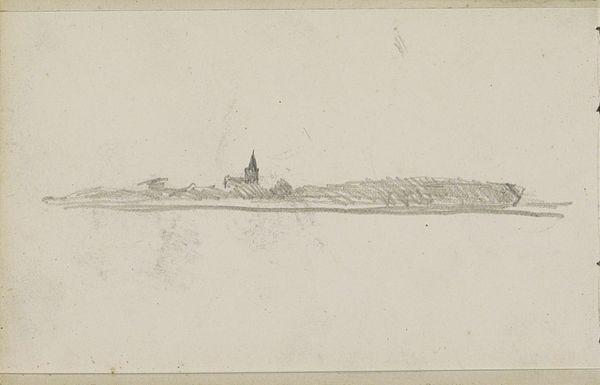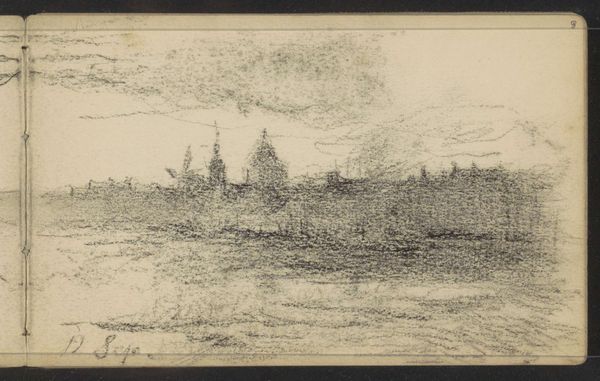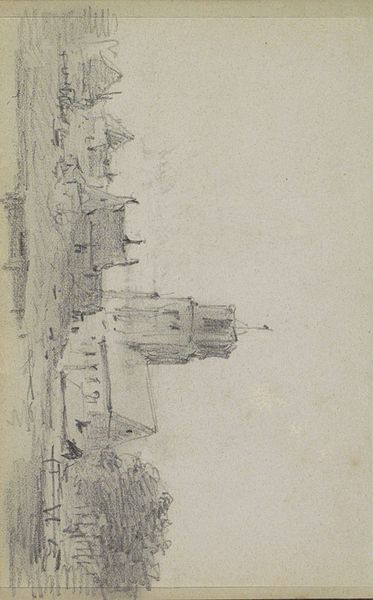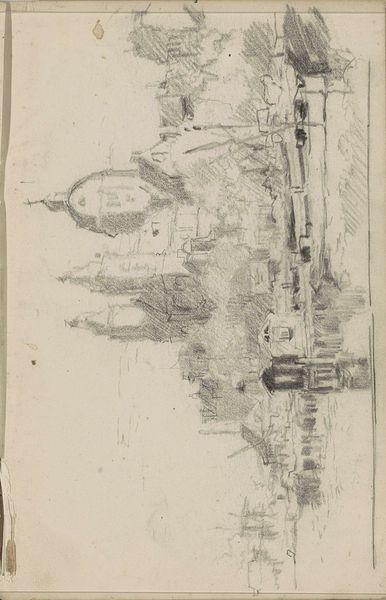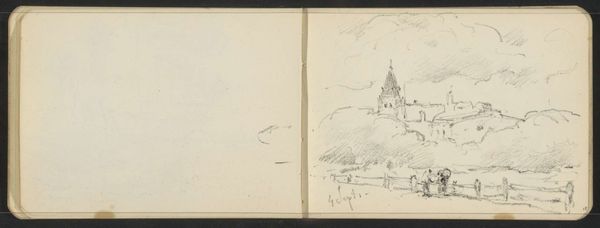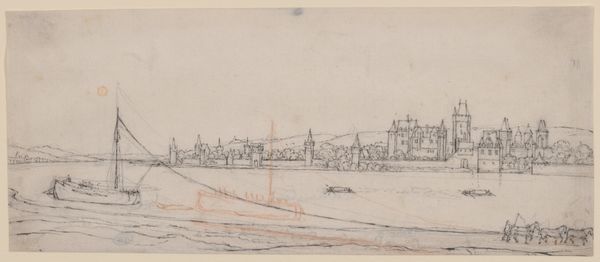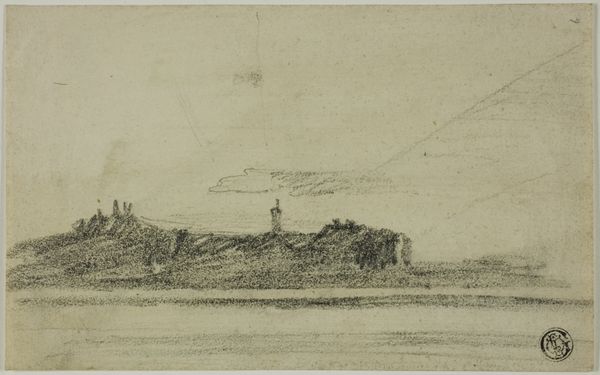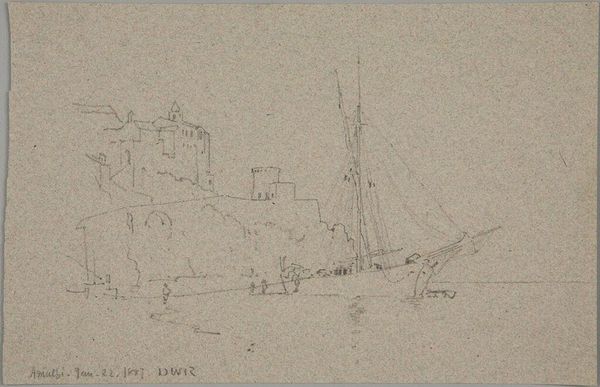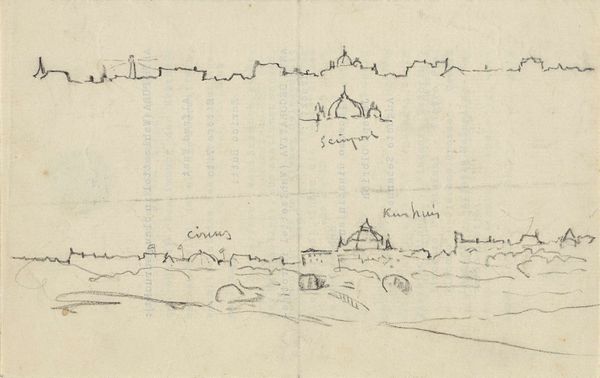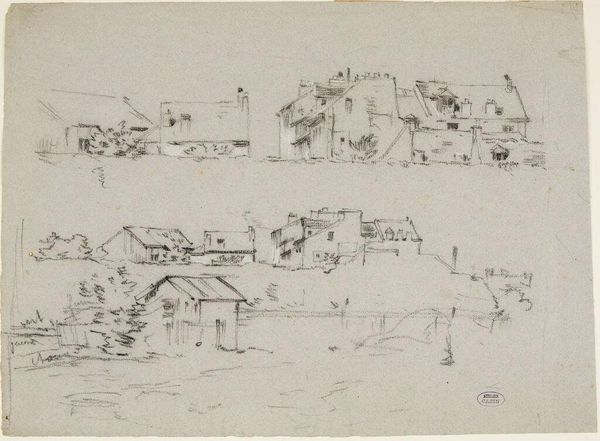
drawing, plein-air, paper, pencil
#
drawing
#
impressionism
#
plein-air
#
landscape
#
paper
#
pencil
#
cityscape
#
realism
Copyright: Rijks Museum: Open Domain
Editor: We're looking at "Gezicht op Het Singel met de Ronde Lutherse Kerk in Amsterdam," a pencil drawing on paper by George Clausen, dating back to 1875. It's so delicate, almost like a memory fading into the paper. What draws your attention when you observe this cityscape? Curator: The drawing exemplifies the formal qualities of plein-air Impressionism. Consider how the rapid, suggestive strokes of pencil capture the transient effects of light and atmosphere, not only upon the architectural forms but particularly on the water itself. Editor: It’s interesting how the dome and the tower anchor the composition despite the haziness. What about the line work? It seems almost unfinished in parts. Curator: Precisely. Notice the strategic use of hatching and cross-hatching to create tonal variations and model forms without resorting to continuous lines. The perceived incompleteness underscores the fleeting moment—a key concern of Impressionist practice. How do the contrasts in texture contribute? Editor: The roughness of the strokes makes it feel like a snapshot in time, not necessarily something meant to be perfectly representational. So it's not about accurate representation but rather the aesthetic experience itself. Curator: Indeed. Focus on the formal properties and the relationship of the forms with one another and the artist's hand becomes visible in the work itself. We get to consider drawing as both subject and medium. Editor: I never thought about it that way before. I appreciate how your analysis brings attention to the basic artistic considerations, not just a surface read. Curator: Observing the material construction of a work allows it to come alive in new ways.
Comments
No comments
Be the first to comment and join the conversation on the ultimate creative platform.
